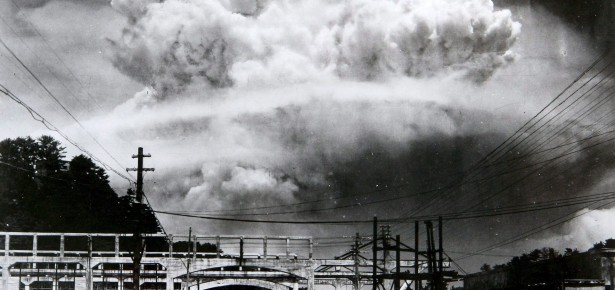
In 1962 a young Jewish American psychiatrist by the name of Robert Lifton visited the Hiroshima Peace Museum. Lifton described his visit to the museum in a letter to his friend David Riesman as follows: “I had seen many such pictures before … but somehow seeing these pictures in Hiroshima was entirely different … we left this part of the exhibit reeling … Both of us anxious, fearful and depressed – Betty [Lifton’s wife] to the point of being physically ill.” Lifton decided to stay in Hiroshima and help its survivors. His research greatly altered our understanding of Hiroshima and the psychiatry of trauma. It will be hard to find similar responses by visitors today. The Liftons’ reaction to the museum was not just a function of their encounter with the horror of Hiroshima but of the heightened awareness of the importance of the city in light of the global tensions that would bring the world to the brink of nuclear war that same year. The museum and Peace Park today are far calmer places (perhaps even too calm). The message of peace, felt so urgently by Lifton, has lost its edge in Hiroshima. Italian journalist Tiziano Terzani captured the mood of the place succinctly when he wrote, “In Hiroshima … even the doves are bored with peace.” The serenity and passivity of the memorial begins right at the entrance to the museum, where a fi lm opens with the words, “on the sixth of August, 1945, a nuclear bomb was dropped on Hiroshima and vast numbers of its citizens died [emphasis added].” There is no mentioning or way of knowing who dropped the bomb or what had led to the event. These words embody in them the entirety of the message of the memorial: Hiroshima is presented like the scene of a natural disaster, separated from any historical chain of events. Carol Gluck called this kind of narrative, “history in the passive voice.” In a world that still has over 20,000 nuclear weapons , such serenity in the face of past and (possible) future horror is extremely troubling.
On the sixth of August, 1945, a nuclear bomb was dropped on Hiroshima and vast numbers of its citizens died
When I visited the memorial, forty years after Lifton, the Hiroshima Peace Museum’s passivity stood for me in sharp contrast to the shocking photos and evidence of destruction of that day. The words that framed the images seemed to be a part of an effort to contain the shock and anger a visitor might feel. The memorial message seemed to be designed to counter the subversive potential of Hiroshima. Indeed, this was the case not just with the memorial. The survivors themselves, whose stories I heard, seemed restrained; their stories almost always ending with a plea for understanding and world peace. What I came to understand over the course of this research is that the entire edifice of remembrance in and around Hiroshima was, consciously or not, built around containment. The very shape of the city and the spatial division between the island of Nakajima, where the Hiroshima Peace Memorial Park is located, and the rest of the city, suggest a much deeper division between the past and the present; as if Hiroshima wished to demarcate and distance itself from the past. It seemed to me that, as a visiting journalist once remarked, “People built this city to forget.” Hiroshima’s memory, I realized, however, was never, with the possible exception of the late 1940s, actively suppressed. Rather, the principal argument of this work is that Hiroshima’s tragedy was rendered harmless to the status quo by the particular way in which it was remembered. Commemorative work in Hiroshima was largely used to normalize and domesticate the memory of the bombing. The bomb was presented not as a probable result of our reliance on science and technology but – in the words of the epitaph of the central memorial cenotaph – a mistake: a sort of temporal slippage into a darker time. Furthermore, Hiroshima’s sacrifice was supposed to rectify this error somehow, set history right and put progress back onto its “normal” course. The bomb therefore was presented as a transforming baptism, on one hand, and a rupture that must be healed, on the other. This phenomenon was not limited to Hiroshima. The effort to contain the bomb’s memory was profoundly shaped by the larger efforts of elites in the East and West to rebuild a postwar order and to reaffirm, the bomb and the concentration camps notwithstanding, belief in modernity and science.
Download the full excerpt here.
Latest Comments
Have your say!